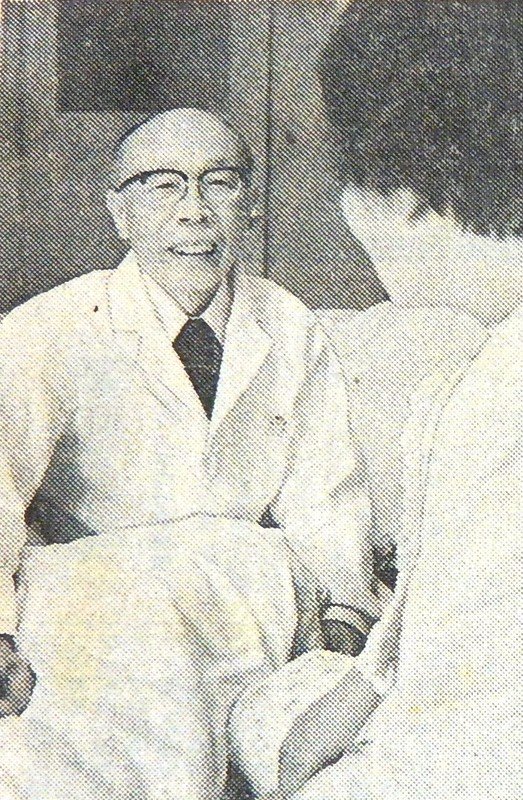A new research article has been published by Dr. Ágota Duró at the Asia-Pacific Journal (JapanFocus). Duró recently recieved her PhD from Hiroshima City University in Peace Studies, and (full disclosure) I was her doctoral supervisor. This article is drawn from her dissertation which focused on Japanese civil society support for the rights and welfare of Korean hibakusha. There were tens of thousands of Koreans who experienced the nuclear attacks on Hiroshima and Nagasakai, and it is only in the last few decades that they have recieved access to medical care related to their injuries and radiation-induced illnesses and legal recognition as hibakusha. These steps were largely forced on the Japanese government by the organizing and efforts of a small group of Japanese citizens. This article focuses on the support for Korean hibakusha from the Japanese medical community and groups organized to help Korean hibakusha access adequate medical care.

Dr. Kawamura Toratarō in 1984. (Source: Chūgoku Shimbun)
Duró writes:
"In the wake of the recognition of the lack of relief measures and medical support for atomic bomb survivors (hibakusha) residing in South Korea, some Japanese dedicated themselves to assuring that Korean victims received subsidized medical treatment. This study assesses the significance of Japanese civil society-based medical support implemented by an anti-nuclear and relief organization, Kakkin Kaigi, and a Hiroshima-based doctor, Dr. Kawamura Toratarō. It also analyzes Japanese – South Korean citizen cooperation and the Japanese governmental relief program for hibakusha. In particular, it explains how Japanese grassroots movements succeeded in providing long-term medical support and eventually assuring that the Japanese government extend relief to long-neglected Korean victims.
This article explores the medical assistance for Korean hibakusha who returned to South Korea, as carried out by Japanese citizens in the 1970s and 1980s, with a particular focus on Kakkin Kaigi and Kawamura’s support activities, but also touching upon the Japanese – South Korean intergovernmental relief program. The medical committee Kawamura set up in 1984 was more effective in providing support for hibakusha in South Korea than the medical support program introduced by the Japanese and South Korean governments in the 1980s. The grassroots medical assistance for Korean hibakusha launched in the 1970s also contributed to the Japanese Supreme Court’s 2015 landmark ruling that guaranteed reimbursement of the medical expenses of overseas hibakusha."
It is a powerful article based on exhaustive historical research and oral history interviews.